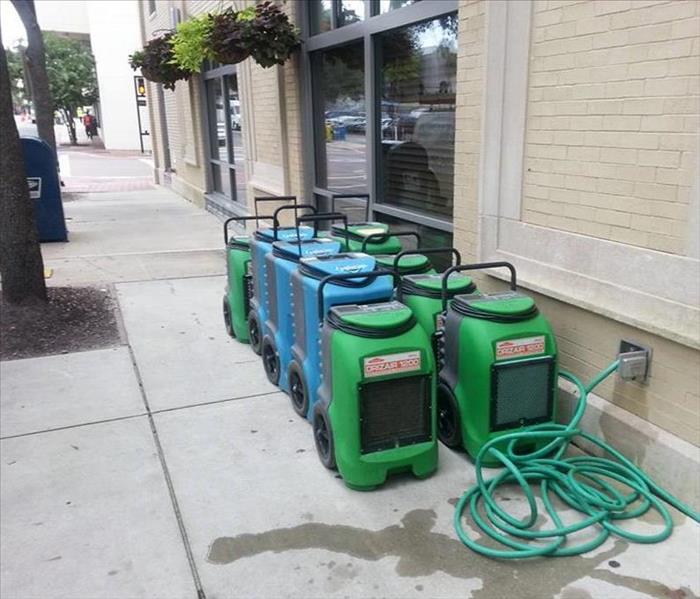
Step 4: Drying and Dehumidification
Our Water Damage Restoration Process
Once the excess water has been removed, the floors and walls may appear dry, but a quick inspection will reveal that they are wet to the touch. Nearly all building materials like wood, drywall, and flooring materials are porous and therefore retain water. This retained water can cause the materials to break down, warp, or cause mold damage. The term dry rot is important to understand. There will be customers that believe that they can turn off that loud equipment and that everything is dry. While most people will agree that it feels dry to the touch, it is still considered wet by science. The moisture content in North East Florida is 11-12% with wood appearing to be dry at around 20%. You can understand that people will turn off loud machines for silence, but rest assured that the techs at SERVPRO of Mandarin have your best interest at hand.
Drying / Dehumidification
Our Professionals will use room measurements, temperature, and relative humidity to determine the optimal number of air movers and dehumidifiers to dry your home or business. We’ll carefully monitor the progress using moisture meters until the materials return to acceptable drying goals.
- Use Dehumidification Equipment
- Use Monitoring Equipment to Track Progress
Monitor Floor and Walls
We check the moisture levels to monitor the drying process.
- Monitor Floors
- Monitor Walls
Drying Equipment
- Industrial-grade dehumidifiers help prevent secondary water damage like swelling and warping of floors, walls, and furniture.
- High-speed air movers create airflow across walls, carpets, pads, and furniture, which accelerates the evaporation of moisture.

 24/7 Emergency Service
24/7 Emergency Service




